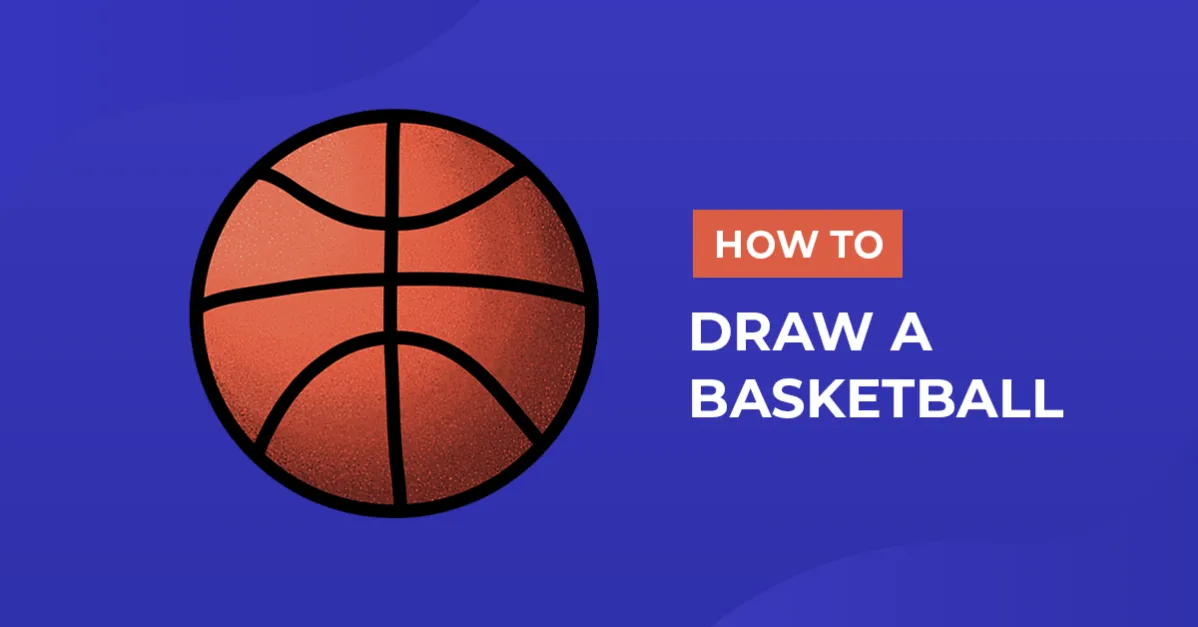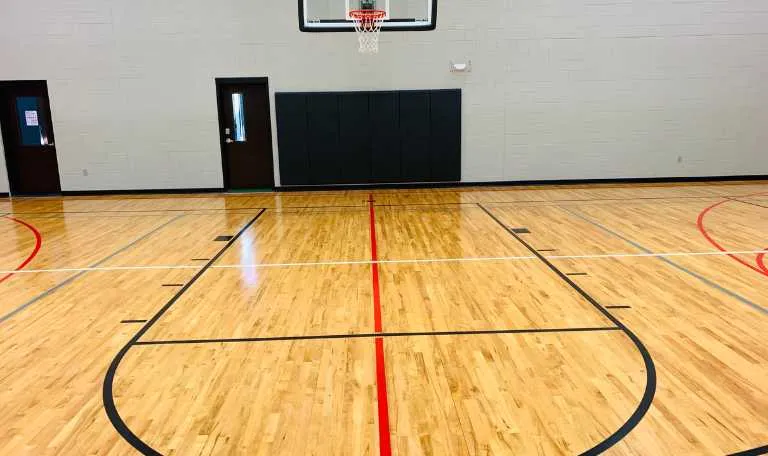How to Draw a Basketball?
Draw a basketball can be a silliness and compensating experience, whether you’re a confident specialist or essentially wanting to deal with your capacities. With two or three precise techniques and a hint of preparation, anyone can sort out some way to make a sensible basketball drawing. This guide will walk you through the cycle, from understanding the fundamental shapes to adding the last nuances.
Understanding the Basic Shape
Preceding diving into the genuine drawing, understanding the critical condition of a ball is basic. A basketball is a circle with an undeniable illustration of lines. To begin, picture the ball as an optimal circle. This central shape will be the justification behind your drawing.
If you are pleased with degrees, you should delicately frame a circle using a compass or freehand. Remember, it needn’t bother to be marvelous, as you can refine it later. This circle tends to the outside furthest reaches of the basketball.
Adding Guidelines
At the point when you have your fundamental circle, this present time is the best opportunity to add rules. These lines will help you arrange the wrinkles and components of the basketball history. Start by characterizing a vertical limit through the circle’s convergence point, then add an even line that crosses it. These lines should parcel the circle into four comparable parts, going similarly to the point of view for the ball’s rhythmic movement and the wrinkles’ place.
These guidelines will simplify it to see where the basket ball specific lines will go. Recall that the lines should twist to some degree, mimicking the circle’s three-layered appearance.
Drawing the Wrinkles
Then, at that point, this moment is the ideal time to draw the wrinkles of the ball. A standard basketball has eight specific sheets detached by lines, making an unprecedented model. Including your guidelines as a wellspring of viewpoint, start by defining two twisted boundaries that go from the most noteworthy mark of the circle to the base. These lines follow the state of the circle, projecting out in the center.
When you have these two chief wrinkles, add the additional wrinkles. Characterize four extra twisted limits that merge the underlying two, ensuring they are impartially scattered around the basket ball. These lines should similarly follow the bend of the ball. Make a point of keeping your lines smooth and spilling to stay aware of the basketball’s typical look.
Refining the Shape
After framing the wrinkles, return to the overview phase to review your drawing. Now, you can see that the essential shape can be refined. Use an eraser to clean up any unsavory edges or stray lines. You can similarly change the bend of the wrinkles to ensure they look standard and relative.
At the point when you’re content with the general shape and the circumstance of the wrinkles, dark the lines you want to keep. Use a fine-tip pencil or pen to make new, clean lines that will hang out in your drawing.
Adding Significance with Hiding
To restore your ball, adding significance through concealing is crucial. This step will have a three-layered effect, making your basketball look more advantageous. Begin by perceiving the light source in your drawing. Pick where the light comes from, as this will determine where the highlights and shadows will be.
Start disguising and going against the norm side of the light source. Use fragile strokes to foster the hiding continuously, rolling out a smooth improvement from light to diminish. Revolve around the wrinkles, as they will ordinarily make concealed regions. Add hazier covering in the scores of the wrinkles to highlight their significance.
Besides, contemplate adding hiding around the edges of the ball to give it a more changed appearance. This hiding should be sensitive and unassuming, ensuring that the ball appears to be sitting in space rather than level against the page.
Highlighting the Surface
A ball has a specific surface that adds to its commonsense appearance. To get this surface, use a mix of hiding and cross-brooding methodologies. Begin by gently covering the external layer of the basketball, promising you to follow the bend of the ball.
Then, add the surface using short, corner-to-corner lines to address the external layer of the ball. These lines should be concentrated along the wrinkles and sheets to show the ball’s hold. Change the kind of your pencil to make different levels of dimness, which will add significance and interest to your drawing.
Finishing up the Nuances
As you near the zenith of your ball drawing, this present time is the ideal open door to add the last nuances. Stop briefly to look at your drawing and recognize districts that need more definition. You ought to develop the elements that are prepared where the light source causes an uproar in and out of town most directly.
Using a white pencil or gel pen, add little elements to the ball, especially near the top where the light source is found. These elements will have a glimmering effect, redesigning the three-layered look of your drawing.
Besides, consider outlining the wrinkles with a hazier pencil or pen to make them pop. This can sharpen the contrast between the basketball sheets and the surface, highlighting its well-conceived plan.
Cautious discipline achieves promising outcomes
Drawing a basketball could have all the earmarks of being immediate, yet like any skill, it requires practice. Encourage if your most noteworthy undertakings don’t turn out to be as distinct as you envisioned. The key is to keep on practising. Investigate various roads concerning different strategies, and have a go at drawing balls from various focuses to foster your capacities further.
Ponder using references from photographs or certified balls to coordinate your drawings. Focusing on a ball’s nuances will help you understand how light and shadow associate on its surface, allowing you to rehash that in your art.
Investigating various roads with Styles
Whenever you’re overwhelmed by the crucial drawing of a basketball, consider investigating various roads regarding different styles. You ought to make a pass at drawing in a ball in a more silly style, using fiery tones and exaggerated shapes. Then again, you can try a more reasonable strategy by incorporating point-by-point surfaces and complex hiding methodologies.
Attempting various things with different mediums, such as shaded pencils, watercolours, or even mechanized devices, can open up extra doors for your ball drawings. Each medium offers outstanding qualities that can work on your masterpiece.
Adding Establishment Parts
To do extra work on your drawing, consider adding establishment parts. A basketball can be drawn in various settings, such as on a basketball court, in an activity room, or even in the ownership of a player. Consider incorporating these parts to make a more interesting association.
You could characterize the limits of a basketball court under the ball or add a player in the background preparing to shoot. These additional parts will give your drawing setting and recap a story.
Sharing Your Work
When you have a specific outlook on your ball drawing capacities, ponder granting your artistic work to others. You can post your drawings online through amusement, craftsmanship organizations, or area shows. Sharing your work license allows you to get input and encourages others to research their creativity.
Attracting various experts can give significant encounters and tips that can also update your capacities. Joining craftsmanship classes or studios can, in like manner, offer opportunities to progress new systems and gain inspiration from individually trained professionals.
Conclusion
Draw a basketball is a remunerating skill that combines insight, strategy, and a creative mind. By following the means delineated in this helper, you can make a functional and connecting depiction of a ball. Focus on sorting out the fundamental shapes refining your lines, and adding significance through hiding and surface.
You will cultivate your unique style and method for managing drawing balls. Whether you are making quality for individual joy, sports-related projects, or just to foster your drawing skills additionally, the key is to practice and have a few great times. Participate in your creative journey and watch your capacities create.
FAQs
What materials do I need to draw a basketball?
You’ll need paper, pencils, an eraser, and possibly colored pencils or markers for shading.
How can I ensure my basketball is perfectly round?
Use a compass or trace a round object to create a perfect circle.
What is the best way to add shading?
Identify your light source and apply shading gradually with gentle strokes, focusing on creating smooth transitions.
How do I make my basketball look three-dimensional?
Use shading and highlights to give depth, particularly along the seams and edges.
Can I draw a basketball in different styles?
You can experiment with cartoonish styles, realistic textures, or even digital art techniques.







